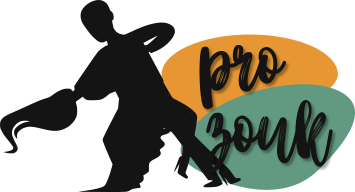How to Test-Drive your Partner, Lead’s Version
Автор статьи: Laura Riva, Канада
Оригинал: http://www.danceplace.com/grapevine/how-to-test-drive-your-partner-leads-version/
So, you’re on the social dance floor. You’ve just asked a partner to dance. This can be someone that you have never danced with, or it can be your first dance of the night with a great friend. Maybe it’s a dancer who you think is really advanced, and you are SUPER excited to go wild!
But wait: you haven’t test-driven the dance yet.
No matter HOW well you know your partner, it is important to ramp up slowly the first time you dance with them on a given night. Why? Because it’s safer – especially for the follow, but also for the lead. It also gives you a great reputation as a ‘safe’ lead. It doesn’t take very long; 30 seconds at the most. Here’s how it works:
The First 5 Seconds:
Get into dance hold (whatever it is for your style). Do you feel connection? If yes, step one is complete. If no, prepare to proceed with the dance cautiously. Usually, not feeling the connection can mean your follow is:
- a) new – don’t do advanced shit.
- b) drunk – don’t do advanced shit
- c) injured/scared – don’t do advanced shit
- d) bad at connection – advanced shit is risky.
If you don’t feel connection, you need to be very, VERY careful about doing advanced movements in your dance. Usually, lacking connection means that your partner is also lacking other fundamentals that could lead to injury or problems if you go all-out. It also means that they are probably less capable of protecting their own body if YOU do something wrong. There may be some very few and far between exceptions for pro dancers crossing over, but it’s difficult to tell where their limits may be.
Remember, if your follow gets injured, they will almost always blame you – whether or not it’s your fault. Plus, part of being a great lead is being able to recognize your partner’s limitations and compensate for them.
The Next 25 Seconds:
Start dancing. See what your follow can do. Are they struggling with basics? Are they unbalanced? Do they throw themselves into dips when all you want is a small lean? Do they seem frightened or nervous with certain movements, or suddenly give more resistance to the connection? Then pull back what you are doing. It’s possible to give these partners (and yourself) a great dance by being creative. Play with variations of basic movements. Avoid dips or multiple spins. Play with body isolations or movements – the possibilities are endless.
If it’s a familiar partner, this can take less time – but be aware that dance ability changes day-to-day. Your partner could be still warming up, injured, drunk, or something else. Even emotional upsets have a big impact on dance ability. Even with familiar partners, you should do a complicated movement slowly the first time you dance with them each night.
The second thing is to always go slowly the first time you do a complex movement – particularly drops and other movements that involve the spine or neck, or movements that require a sudden change of direction. These movements can provide a lot of risk to the spine and neck or shoulder. Pay attention if your partner lags on spins as well – there could be stress going through their knees. If there is anything ‘sticking’ in these movements, do not do them at a fast speed or with a sharp accent – you could hurt your partner.
The Rest of the Song
After the initial 30 seconds, let yourself go – within limits. If you are doing complicated movements, slowly up the speed or sharpness – not suddenly – and always check that your partner is prepared for the movement before you execute it. If you haven’t gotten the training and you picked the move up socially, I would recommend staying away from sharp and potentially injurious movements completely. Part of test-driving is dancing within your limits – not just the limits of your partner.
If you’ve never ridden a motorcycle, it doesn’t matter how great the bike is – don’t take it on the freeway. It’s a bad idea. Problem is, in social dancing you are dealing with a person – not a bike – and the follows are generally the ones who get hurt the worst from bad decisions on the dance floor.
“But… This doesn’t sound fun!”
I have no sympathy for leads who ‘have fun’ at the expense of their partner – go do a solo dance. You are perfectly capable of keeping your partner safe and having fun, and thirty seconds at the beginning of a song is not going to slow down your night. If anything, those thirty seconds are great for establishing a deeper, more trusting connection that will take you on a magic carpet ride for the rest of the song. Enjoy the aspect of connecting with your partner and exploring each other’s capabilities!
Dancing is a magical, wonderful connection. We are all capable of keeping ourselves and others safe – and this will only ever enhance social dancing. So, make it a point to be the lead that is safe, fun, and secure. Follows will love you for it – regardless of how advanced you are.
|
1
4201 |





 English
English

Удалить комментарий?